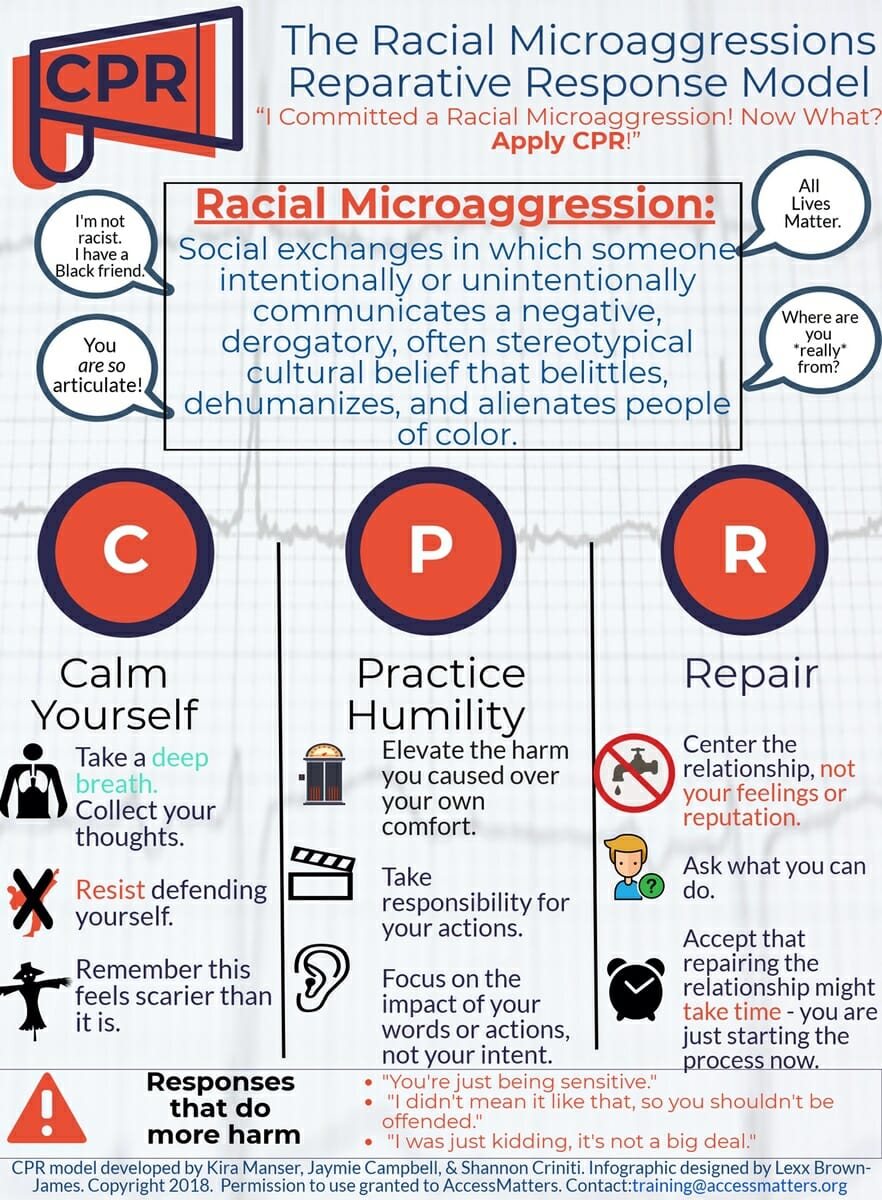By DR. ALICE HOLLAND
This year has heightened our collective attention to the need for racial justice. Words and actions continue to impact individuals, communities and societies. And minority populations are particularly vulnerable to injustices and disparities.
Microaggressions, often expressed as “death by one thousand cuts,” is a term that originated in the 1970s. Microaggressions encompass words or behaviors that convey hostile, derogatory, or negative insults directed at a person or target group. Frequently, microaggressions take the form of stereotypes, prejudices, and discriminations. Microaggressions don’t necessarily need to be intentional. In fact, they are often brief frequent denigrating messages sent by well-intentioned people who are unaware of the hidden implications. Even if there is no ill intent, the behavior of committing a microaggression is inexcusable. Microaggressions can cause real harm. There are many negative effects of microaggressions, including lack of educational opportunities and access to healthcare.
With the start of the academic year coinciding with the rise in awareness of racial injustice, I recommend a three-step approach that has been successfully deployed in my college classrooms. To raise the understanding of microaggressions, I apply CPR: Calm yourself, Practice humility, Repair (Manser, Campbell, Criniti, & Brown-James, 2018).
First, Calm yourself. After an inappropriate statement or insulting behavior, initially, you may experience a sense of shock or surprise and struggle to determine how to respond. That’s the moment to identify your behavior, stop, and take a slow deep breath.
Next, Practice humility. Steer clear of excuses. Even if you didn’t mean to be hurtful, acknowledge that a microaggression was committed and recognize the impact of your words or actions.
Finally, Repair. Take responsibility. Genuinely express your regret and then correct your behavior. Avoid over apologizing, as this creates a situation where it’s more about you rather than the individual or community that you hurt.
Continuous microaggressions result in adverse physical and psychological implications as a result of being immersed in a chronic, racially-charged environment. These repetitive instances cause stress and trauma, and chip away at the recipient’s health and self-worth.
Addressing microaggressions can feel overwhelming. It’s worth our time to self-reflect and educate ourselves on how to do better. The CPR model cannot solve all the complexities of racism. However, this model is a good starting point for engaging students in conversation, to allow students to catch themselves when making mistakes, to reflect upon personal biases, and to correct their actions. An effective start to change is the willingness to lean into the discomfort that has been created. Consider an apology and promise to do better, a sincere effort such as this will go a long way to making a difference.
Dr. Alice Holland, PhD, APRN, CSE is a national certified family nurse practitioner and national certified sex educator. She is an Assistant Professor in the Department of Nursing and Health Professions at the University of South Carolina Beaufort (USCB).
Reference: Manser, K., Campbell, J., Criniti, S., and Brown-James, L. (2018). The Racial Microaggressions Reparative Response Model Infographic. Retrieved 2020, August 10 from www.lexsexdoc.com/for-purchase









